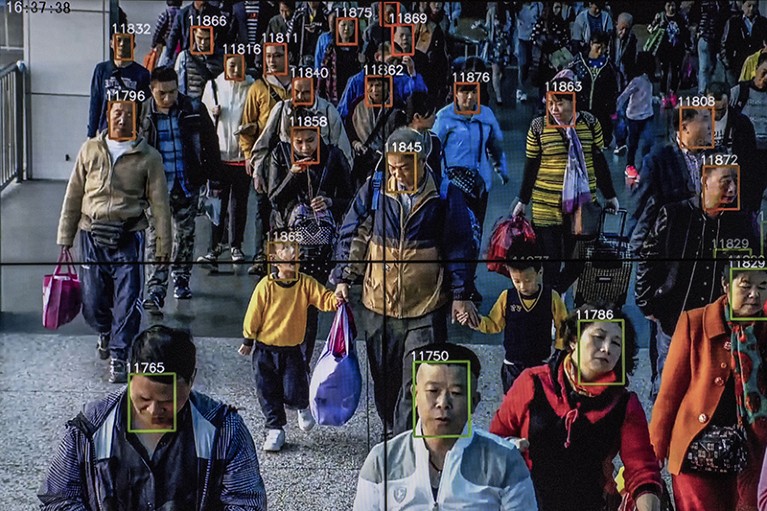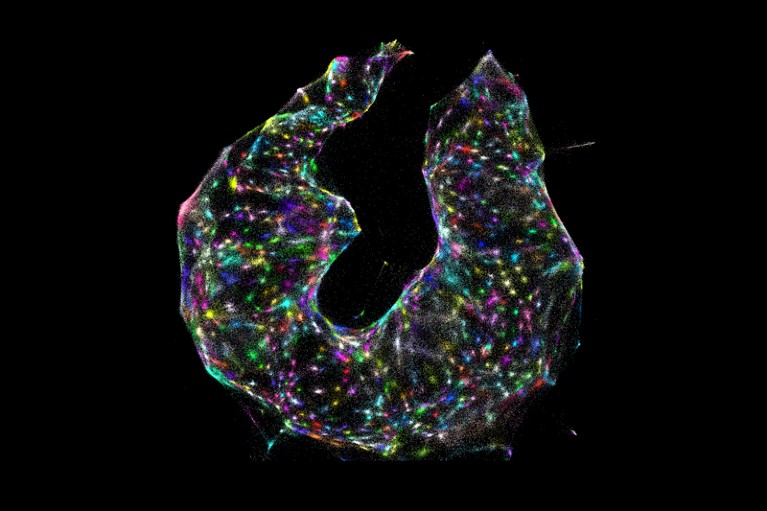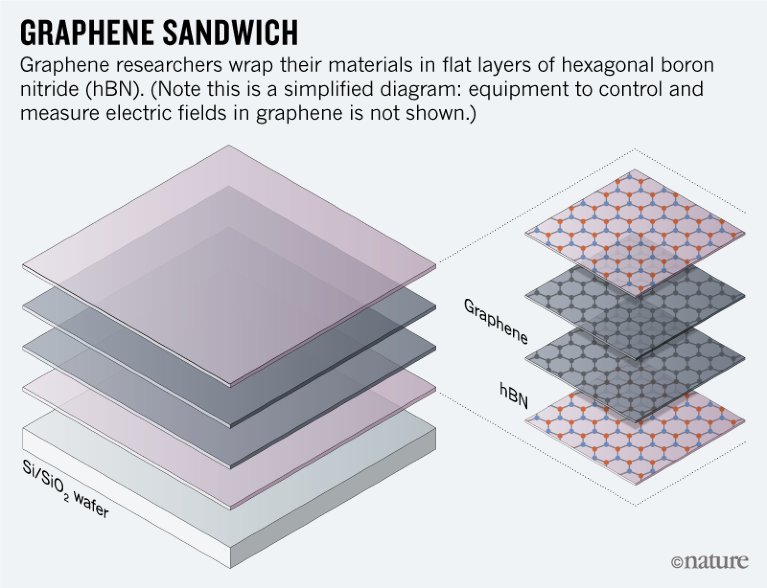Hello Nature readers, would you like to get this Briefing in your inbox free every day? Sign up here.

China’s huge population is helping the nation make great strides in facial-recognition technology.Credit: Gilles Sabrie/NYT/eyevine
Will China lead the world in AI by 2030?
Two years ago, China set 2030 as the deadline to become the global leader in artificial intelligence (AI). As the first of its self-imposed milestones approaches, analysts are examining how far the country has come in achieving its goal. They note that China’s AI research is growing in quality, but the field is still playing catch-up with the United States in terms of high-impact papers, people and ethics.
Read more: International AI ethics panel must be independent (Nature editorial)
Outcry over geologist’s firing
Geoscientists are protesting against the dismissal of a prominent geologist from the University of Copenhagen, saying her alleged missteps don’t justify sacking a tenured professor. Irina Artemieva, an internationally esteemed specialist in lithology, denies the university’s claims that she repeatedly failed to fulfil various administrative and teaching duties. The move comes just three years after another controversial firing: Hans Thybo, a leading geologist who at the time was president of the European Geosciences Union, was dismissed from the same faculty over his use of a private e-mail account for work purposes.
July was the hottest month ever recorded
July was the hottest month ever recorded on Earth. And that’s just one of several worrying records broken last month, according to the US National Oceanic and Atmospheric Administration. July came hot on the heels of the warmest June on record. And the extra heat has helped to shrink Arctic sea-ice levels by nearly 20% — another record.
FEATURES & OPINION

Each point is an individual RNA molecule, localized by its proximity to other RNAs. This imaging method is called DNA microscopy, for its use of DNA sequencing.Credit: Joshua Weinstein/Broad Institute
Hackathon homes in on RNA
The growing methodological toolset known as in situ transcriptomics pinpoints where RNA is located in a cell. This can reveal relationships that might otherwise be overlooked, such as which cells are talking to which. Now, an effort led by the Human Cell Atlas project and paid for by the Chan Zuckerberg Initiative aims to create order among the explosion of algorithms, pipelines and file formats that are being used to analyse the complex image data involved.
We grow the seeds of graphene
Two scientists in Japan supply hundreds of laboratories with a prized gem: glimmering, clear, millimetre-sized crystals known as hexagonal boron nitride (hBN). It provides the perfectly flat, protective substrate that researchers need to probe the complex electronic properties of graphene. Visit their lab — a mix of machine shop and chef’s kitchen — and discover why they are now among the world’s most published researchers.

Take the rest of the summer off
Taking a well-earned break will benefit your productivity in the long run, says cell biologist Jennifer Rohn. Over her holiday time, she still has to chip away at academic chores that cannot wait, because they are keeping her lab alive. That’s why she’s saying no to peer review during her break.
